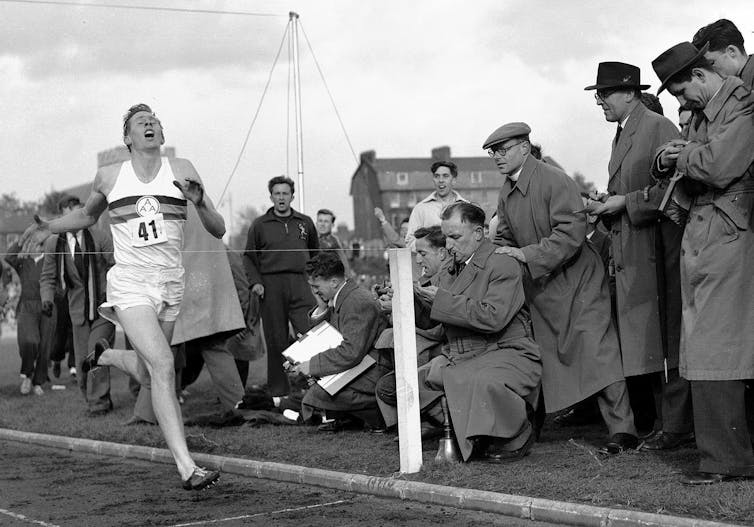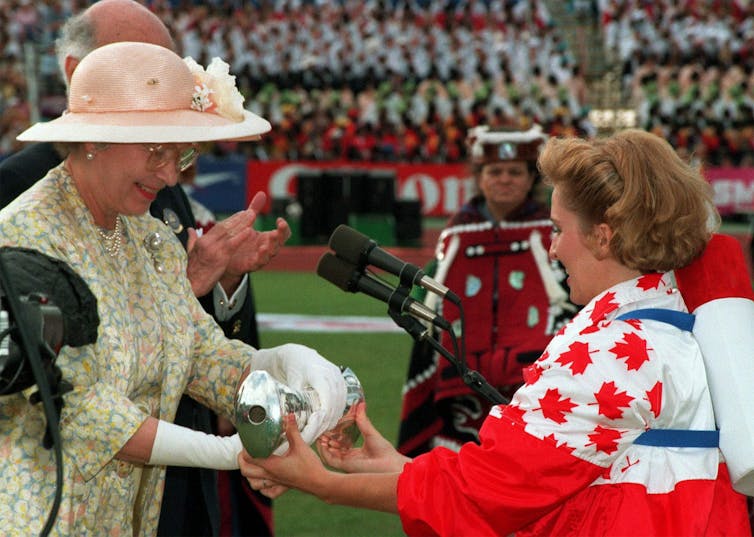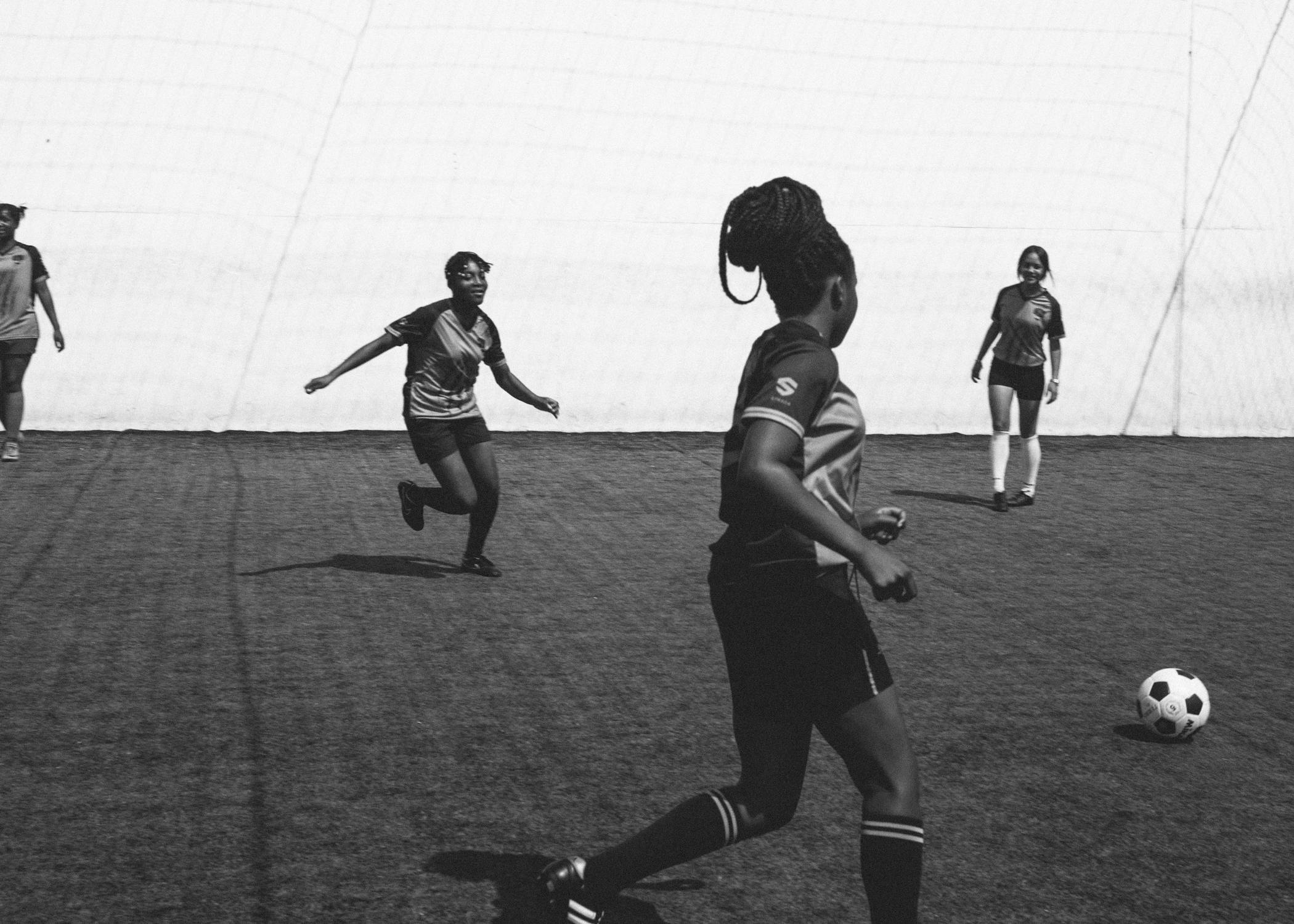[ad_1]
The United Kingdom is celebrating Queen Elizabeth’s 70 years as head of the Commonwealth.
As several know (potentially by means of Netflix’s biopic The Crown) the Queen ascended the throne in 1952 following the sudden dying of her father King George VI.
Above seven a long time, her relatives members have often presented on their own as avid (upper-course) sportspersons, but also as distinguished patrons at more common (performing-course) sporting occasions. Activity, in short, has been a sizeable aspect of her reign.
Social and political problems of the early 1950s propelled a core feature of up to date sport: the quest to push the boundaries of human probability. In an future BBC Sportshour phase, sporting activities journalist Caroline Barker, sports historian Jean Williams and I discuss the romance among the Queen and sport — as very well as how 21st-century sport found its roots through the early days of Queen Elizabeth’s reign.
No longer a fading empire
Athletically, two of the most essential times in human barrier-breaking took place at the start out of Queen Elizabeth’s reign.
On the working day of the Queen’s coronation, information reached the British Isles that New Zealander Sir Edmund Hillary and Nepalese Sherpa Tenzing Norgay summited Mount Everest for the initial time on behalf of her Empire. And less than 1 yr later on, Roger Bannister broke the mythical 4-minute mile barrier on a observe in Oxford.
These demonstrations of final human bodily achievements set in movement the travel for incremental or marginal gains that at the moment dominate activity sciences and athletic preparations.
The two functions ended up touted not only as extraordinary feats demonstrating the capacities of human bodily possible, but as symbols that the United Kingdom was no more time a fading and diminished Empire following the devastation of the Second Entire world War.

(AP Picture)
Even though the idea of nations like the United States and the U.K. asserting themselves via athletic exploits wasn’t new, Britain’s essential position in globalization, and the increase of nationalism in a publish-Second Earth War geopolitical landscape, merged with the explosion of television viewership strategically applied by both the Queen and sport intended intercontinental sporting success turned progressively major.
Sport as a device for identity
Into this growing activity entire world stepped the Soviet Union. In 1952, just months into the Queen’s reign, the Soviet Union participated in the Olympic Game titles and promptly challenged the potent Americans’ international activity dominance.
This led to several years of Cold War sporting overcome when global competitions — including the Olympics and gatherings like the Canada-Soviet ice hockey Summit Sequence in 1972 — served as areas for marginal gains as countries weaponized athletes as pseudo-brokers of their nations.
The use of sport as a software for nationwide id and political battle has been magnified more than the earlier 70 many years.
Activity as a tool for social justice
Combining the athletic push for boundary breaking, the intersection of sport and politics, yet another characteristic of contemporary sport formulated in the earliest times of Queen Elizabeth’s reign: the use of activity as a tool for social justice.
Most famously, 5 decades before the Queen’s ascension, Jackie Robinson broke the Main League Baseball color barrier.
Above the Queen’s 1st a long time on the throne, activity integration continued to extend, and by 1957 a retired Robinson employed his activity platform to stand side-by-side with Martin Luther King Jr. as a prominent leader of the Civil Legal rights Movement. Quickly athletes like Muhammad Ali and Billie Jean King fought towards racial and gender inequality in and by way of sport.
In excess of the study course of the Queen’s 70-year reign, sport has remodeled into a very technological, politicized, pervasive and commercialized entity. In several methods sport right now is unrecognizable from what it was like in 1952.

CANADIAN Push/Andrew Vaughan
Existing challenges that dominate sport discourse contain balancing restrictions on technological interventions in sport, sportswashing techniques utilized by nations with questionable human rights records, the intercontinental sporting arms race, athletes as political influencers and how to figure out eligibility for athletes like Caster Semenya.
These modern day sporting troubles designed incrementally around the past 70 several years. And like sport, the Queen’s part in 2022 generates sizeable critical discussion — specially in phrases of the monarchy’s appropriate and functional location in culture as effectively as the misuse and unequal distribution of resources.
But on the situation of her Platinum Jubilee, it serves as a helpful prospect to reflect on the advanced interactions and historical evolution of not just the British monarchy, but the transformations (for greater or worse) in sport, politics and society through her reign.
[ad_2]
Source backlink







